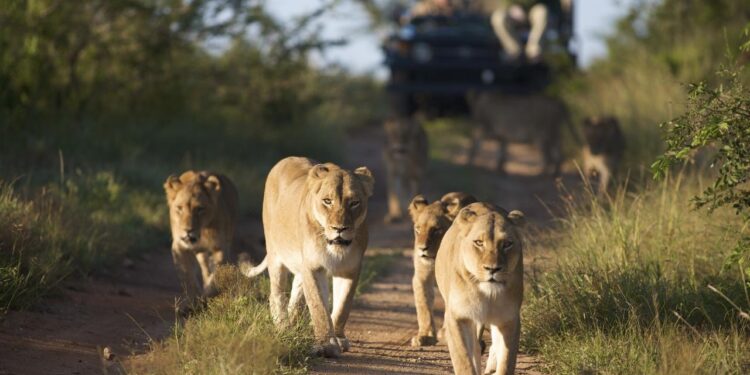Welcome to Mother Nature’s untamed heart, where lush landscapes and enchanting creatures coexist in delicate harmony. Conservation areas, which are designed to preserve and protect the Earth’s most valuable ecosystems, serve as beacons for both wildlife enthusiasts and curious travellers. However, as the human footprint moves across these sacred grounds, a subtle yet profound shift occurs in the very essence of the animal kingdom. Join me on this journey as we investigate the complex tapestry of animal behaviour in the presence of tourists.
As dawn breaks over the conservation area, a previously undisturbed symphony of wildlife awakens. Birds serenade the rising sun, and the rustle of leaves signals the start of a new day. However, the arrival of tourists creates an unfamiliar cadence, a subtle discord that ripples through the tranquil orchestra. Animals, sensitive to their surroundings’ harmonies, detect the intrusion.
Tourists, armed with cameras and binoculars, approach the habitat with a sense of anticipation and wonder. As they tiptoe through the wilderness, animals become acutely aware of the new creatures in their midst. Some are curious and cautiously observe the bipeds, while others retreat to the shadows, preferring the safety of obscurity.
Animals are masters of adaptation, and in the presence of tourists, they gracefully adjust their behaviour. To avoid encounters, nocturnal creatures may change their schedule and become more active during the day. Diurnal species may retreat to the safety of dense foliage or soar to greater heights to observe the unfolding human drama from a distance.
One of the most noticeable changes in animal behaviour is the allure of human-provided treats. Tourists, often motivated by good intentions, provide food to wildlife, unintentionally disrupting the delicate balance of natural diets. Animals’ foraging habits may change, with them relying on handouts rather than seeking out traditional food sources. This seemingly innocent act can have far-reaching consequences for the health and behaviour of the animals involved.
Under the surface of apparent tranquilly, the stress on wildlife caused by tourists is palpable. Constant human presence, chatter, and intrusive camera clicks can disrupt the animal kingdom’s natural rhythms. Stress causes altered feeding patterns, increased vigilance, and, in extreme cases, can contribute to a decline in reproductive success.
Tourists, full of curiosity and wonder, unintentionally become unseen conductors of change in the delicate orchestration of wildlife behaviour. As we travel through conservation areas, let us be mindful custodians of these natural wonders, treading lightly and respecting the sanctity of the wilderness. Through understanding and responsible tourism, we can ensure that the whispers in the wilderness continue to enchant future generations, fostering a peaceful coexistence between humanity and the untamed beauty that graces our planet.
Do you have a story in your community or an opinion to share with us: Email us at editorial@watchdoguganda.com














